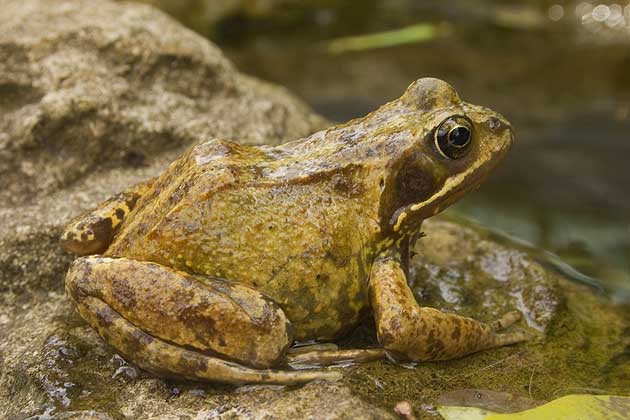Half of Europe's frogs face extinction

Your support helps us to tell the story
From reproductive rights to climate change to Big Tech, The Independent is on the ground when the story is developing. Whether it's investigating the financials of Elon Musk's pro-Trump PAC or producing our latest documentary, 'The A Word', which shines a light on the American women fighting for reproductive rights, we know how important it is to parse out the facts from the messaging.
At such a critical moment in US history, we need reporters on the ground. Your donation allows us to keep sending journalists to speak to both sides of the story.
The Independent is trusted by Americans across the entire political spectrum. And unlike many other quality news outlets, we choose not to lock Americans out of our reporting and analysis with paywalls. We believe quality journalism should be available to everyone, paid for by those who can afford it.
Your support makes all the difference.More than half of all amphibian species in Europe could become extinct by 2050 because of a combination of habitat loss, infectious diseases and the effects of climate change, scientists have found.
The latest assessment of frogs, toads, salamanders and newts suggests many will be severely threatened in the coming decades, especially in southern Europe where the climate is expected to become significantly warmer and drier.
But even familiar British amphibians such as the common frog and toad are highly vulnerable, said Trent Garner, of the Zoological Society of London.
"Published projections show that climate change alters amphibians' habitats so we expect a large number of species to be faced with loss of habitat and, ultimately, extinction," Dr Garner said yesterday.
"In the UK, we are already seeing common toads losing condition and experiencing reduced survival. As climate change continues to impact habitats, the situation gets far worse for these native species," he said.
A succession of mild winters has meant hibernating toads in Britain have emerged early from their winter sleep and become sickly because food is not available.
Sir David Attenborough also voiced his concern about the threat to amphibian species. "Amphibians are the lifeblood of many environments, playing key roles in the functions of ecosystems, and it is both extraordinary and terrifying that in just a few decades the world could lose half of all these species." Sir David said.
In addition to climate change and habitat loss, a deadly skin fungus called chytrid that has killed many amphibians around the world has been found in Britain.
Dr Garner said the chytrid fungus may have arrived with alien species, notably the African clawed toad used in research. British amphibians are also being attacked by ranaviruses, which kill thousands of frogs, toads and newts each year. These may have been introduced with the release of the North American bullfrog.
There are more than 6,000 known species of amphibian and a 2004 assessment suggested that at least a third of them are threatened with extinction.
Join our commenting forum
Join thought-provoking conversations, follow other Independent readers and see their replies
Comments